*Update: On December 18, 2024, the Federal Government released the final version of the Clean Electricity Regulations. In the final version, the government introduced staggered implementation timelines for compliance. For most units, the CER apply as of January 1, 2035. For certain planned units, the Regulations will apply as of January 1, 2025. Units converted from coal to gas have a later applicability date, which depends on commissioning dates and compliance with provisions under the Regulations Limiting Carbon Dioxide Emissions from Natural Gas-fired Generation of Electricity.
The new version of the regulations also scales back the amount of projected reduction in greenhouse gas emissions from 342 million tonnes to 193 million tonnes. This is a 44% adjustment. Before 2050, generating units must limit their annual emissions to 65t/GWh. A unit may emit up to 35t/GWh above the 65t/GWh limit by remitting an equivalent amount of eligible offset credits.
New exemptions to the CER include:
- Emissions from natural gas power plans operating in emergency conditions due to extreme weather will be exempt.
- Plants that exceed their emissions limits will be allowed to use carbon offset credits.
- Power plants can be collectively grouped for emissions, rather than on an individual basis.
For more information on the finalized Clean Electricity Regulations, click here.
On August 10, 2023, the Canadian government released a draft of the Clean Electricity Regulations (CER). The goals of the proposed Regulations are to:
- Help Canada achieve its climate change commitments to achieve net-zero greenhouse gas (GHG) emissions by 2050.
- Lower GHG emissions from electricity beginning in 2035.
The formal consultation for the Clean Electricity Regulations began on August 19, 2023, and is expected to last 75 days. The final regulations are expected to be published in 2024. In this article, we’ll take a closer look at the proposed CER.
Design and requirements
As mentioned at the start, the Clean Electricity Regulations are designed to help Canada achieve a net-zero emissions economy by 2050. Furthermore, the Clean Electricity Regulations were developed under three principles:
- Maximize greenhouse gas reductions to achieve net-zero emissions from the electricity grid by 2035.
- Maintain electricity affordability for Canadians and businesses.
- Maintain grid reliability to support a strong economy and meet Canada’s increasing energy needs.
The Clean Electricity Regulations would apply to any power generator that meets the following criteria:
- Uses any amount of fossil fuels to generate electricity
- Has a capacity of 25 MW (megawatts) or greater
- It is connected to an electricity system that follows the North American Electricity Reliability Corporation Standards (aka. NERC Regulated Electricity System)
Units that meet the applicability criteria can register for the CER with the Minister of the Environment by the end of 2025. Power plants commissioned after January 1, 2025, can register within 60 days of the commission date.
The performance standard
Under the proposed Regulations, performance standards would be established for electricity generators to limit their emissions. Units that generate 25 MW or more of power and deliver net electricity to the grid must not emit more than 30 tonnes of carbon dioxide equivalent per gigawatt hour (CO2E/GWh) on average during a calendar year. The standard would start on January 1, 2035, for:
- Units that still combust coal or petroleum coke
- All units commissioned on or after January 1, 2025
- A unit that has increased its electricity generation capacity by 10% or more since its registration.
Existing units are expected to align by whichever date occurs sooner, January 1, 2035, or after the “unit’s end of prescribed life” (20 years after its commissioning date). For example, a facility commissioned in 2024 would be allowed to operate outside of the standard until 2044. A power plant that opened in 2014 would be required to meet the performance standard immediately in 2035.
Exceptions
A common perception of the Clean Electricity Regulations is that it will completely prohibit natural gas-fired electricity generation starting in 2035. However, the CER includes several exceptions, one of which is the allowance of fossil gas facilities to operate outside of the performance standard for short durations over a year. As we mentioned in the previous section, some facilities would be allowed to emit large amounts of CO2 into the 2040s. Other exceptions to the CER performance standard include:
- Facilities can operate outside the performance standard during emergency circumstances, such as when there is a grid alert.
- Exemptions for peaker power plants to operate for up to 450 hours/year and emit up to 150 kilotonnes of CO2 per year. These units would support peak-hour energy needs (from 4-7 p.m.) During this period, renewables tend to generate lower amounts of electricity.
- Exemptions for small and remote communities who may lack available funds for renewable electricity generation.
- Power plants that do not exceed a capacity of 25 MW would not be required to follow the CER.
Cogeneration facilities
A cogeneration facility produces heat and electricity simultaneously. The Clean Electricity Regulations will require cogeneration facilities that have net exports to the grid to meet the performance standard. Including cogeneration facilities in the Clean Electricity Regulations is significant as this action will greatly reduce emissions. In Alberta, 28% of electricity is generated from cogeneration, which equals 19 megatonnes of greenhouse gas emissions.
How will the Clean Electricity Regulations impact electricity prices?
This has become a widely debated question, and there does not seem to be a definitive answer. Some provinces and utility companies have raised concerns about the cost of complying with the CER and the potential impacts the proposed Regulations will have on electricity rates. These groups noted that fossil fuel electricity systems would face high costs during the net-zero transition.
Analysis by NextGrid provides an insight into the potential electricity costs under the proposed Regulations. The study lists the percent change in total cost under the CER by jurisdiction for a 1.4X and 2.5X demand growth scenario:

Source: Canada Gazette https://www.gazette.gc.ca/rp-pr/p1/2023/2023-08-19/html/reg1-eng.html
As you can see, Nova Scotia, Prince Edward Island, Newfoundland and Labrador will see slightly higher cost increases compared with the rest of Canada, the reason being these provinces have a higher rate of energy poverty (a household’s inability to afford energy services). The CER could worsen this issue.
What are some challenges of the Clean Electricity Regulations?
The main challenge to the Clean Electricity Regulations is achieving a net-zero electricity grid while maintaining affordability and stability. The flexibility of the performance standard does help achieve that balance.
And while that flexibility is important, some groups operating in the clean energy sector have cautioned against allowing too much leeway for natural gas generation. Doing so could discourage the development of renewable generation and energy storage. This further highlights the tight balancing act the CER faces.
Another challenge to the Clean Electricity Regulations is the resistance it has received from Alberta and Saskatchewan. The Alberta government argues that implementing a one-size-fits-all program across Canada will be difficult, as each provincial gird is different. Saskatchewan has voiced concerns on how the CER will impact the province’s economy. Additionally, Alberta and Saskatchewan do not have the same amount of renewable resources as other provinces. Since both provinces rely on fossil fuels to generate power, it will take longer to meet the CER’s 2035 target. Attempting to do so could also lead to affordability and reliability issues. In contrast, a province that already generates most of its electricity with hydro will have little issue meeting the Regulations’ target. Both provinces have used legislation in response to the draft Clean Energy Regulations. On November 28, 2023, Saskatchewan implemented the First Act, which established a tribunal to study the economic effects of the CER. That same day, Alberta enacted the Sovereignty Act, giving the province a “legal framework” to resist federal laws or policies that are deemed harmful to Alberta. While the Alberta and Saskatchewan governments agree with the principle of the Regulations, they have requested an extended deadline to 2050.
With a proposed enforcement date of January 1, 2025, revisions to the draft Regulations can be made to address the challenges.
Updates to the Clean Electricity Regulations
On February 16, 2024, the federal government announced it was considering several updates to the draft Regulations, partly in response to the opposition from Alberta and Saskatchewan. The performance standard would no longer require generators to meet a universal emissions cap. Instead, each generator would receive a specific annual emissions limit. Also, companies that own multiple generators would be allowed to pool emissions from facilities operating in the same jurisdiction. If companies go over their emissions limit, they can buy carbon offsets.
The proposed updates address several concerns voiced by some provinces and utilities, namely the economic and reliability impacts the CER might have on the electricity industry. The revised CER also provides even greater flexibility for grid operators. As the federal government continues to receive feedback until March 15, more revisions to the Clean Electricity Regulations may follow.
For further information on the Clean Electricity Regulations, check out these resources:
Understanding the proposed Clean Electricity Regulations (part 1)
Understanding the proposed Clean Electricity Regulations (part 2)
Canada Gazette, Part 1, Volume 157, Number 33: Clean Electricity Regulations











